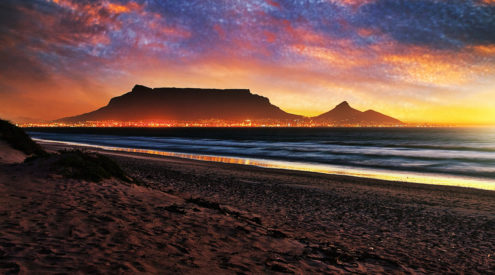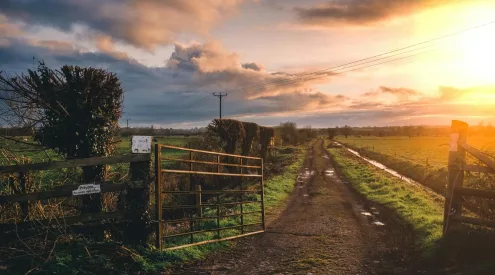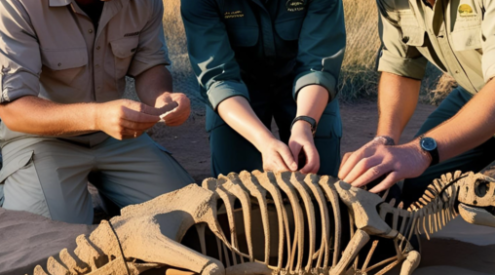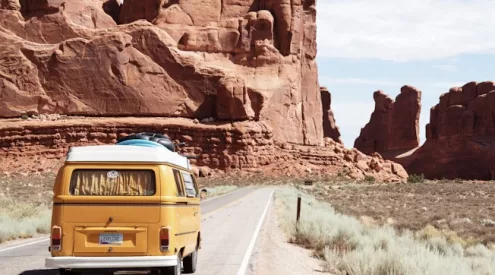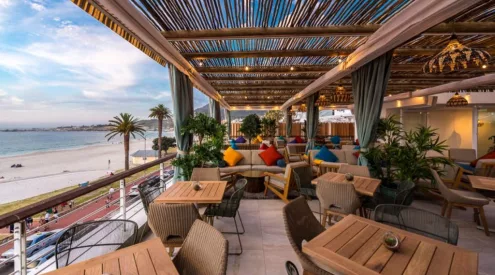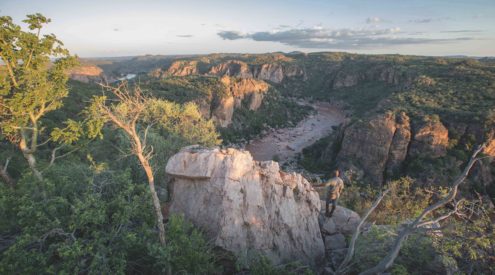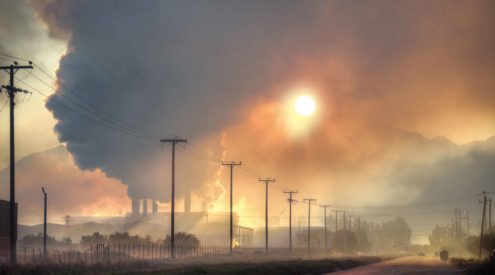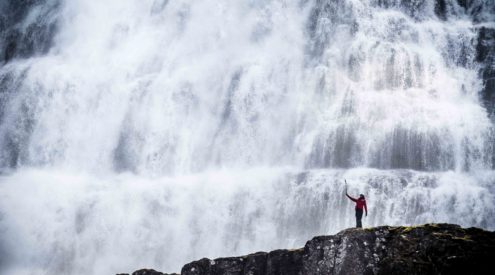Some years ago, I had the privilege of exploring remote corners of Kaokoland. The journey left a powerful impression – a high point of my travelling life.

Image credit: Justin Fox
Landing on a gravel airstrip, I was met by guide Chris Bakkes. ‘Welcome to paradise,’ he said, shaking my hand and leading me to a waiting 4×4. A big man with Medusa hair, fiery beard and one arm (the other was severed by a crocodile), Chris looked like the ultimate wild man of the north-west. But Chris had also written books on the region and been involved in conservation with Wilderness Safaris.
Early next morning, we packed a Land Rover and set off north. We left the basalt heights of the Etendeka Mountains, crossed grasslands dotted with welwitschias, traversed gravel plains and cut through granitic kloofs before swinging west towards the ocean. I was captivated by the elemental scenery.
As we drove, Chris talked of desert elephants, fragile ecosystems and geology, of being trampled by a rhino cow and the practicalities of hand-rearing gemsbok. His love of Kaokoland was palpable. ‘One of the things that makes this place so special is that you have four of the Big Five roaming a wilderness that lies outside any national park,’ he said. ‘It’s truly untamed Africa.’
Late afternoon, we reached the dry Hoanib River and climbed a koppie. The light turned to honey, illuminating a cliff eaten by flash floods. Beyond it, the sandy riverbed, scarlet mountains and yellow dunes made a magnificent tableau. Below us, gemsbok jousted and a herd of giraffe ambled ‘upstream’.
‘Seeing large animals dwarfed by such a landscape really gets to me,’ said Chris. ‘It’s the scale of this place. Unbounded, uninterrupted, free of the marks of man.’
In the morning, we went looking for elephants. Everywhere we saw evidence: dung and pad prints, ana trees neatly pruned at exactly six metres (the elephant height limit) and gorras (holes) dug in the riverbed for water. It didn’t take long to find them: a small herd munching on a stand of camelthorns.
These are very special elephants. To survive in such a dry environment, desert pachyderms range widely, travelling up to 60 kilometres a day between springs. Unlike their cousins in the rest of Southern Africa, they’re careful with the vegetation and sparing with water.
Reaching the Skeleton Coast, we explored the stretch between the Hoarusib River and Cape Frio. We drove through a mesmerising landscape that changed from dune fields to salt pans and mountains seamed with agate, before reaching a shore frequented by 50 000 Cape fur seals. It was breeding season and there was noisy pandemonium on the beach. Scavengers hung around the edges, ready to pick off the weaker pups when they got separated from their mothers.
On the last night, I was walking back to my tent after supper when, rounding a bush, I came face-to- face with a brown hyena. There was a moment of breathless awkwardness. We stood five metres apart; I was transfixed. The hyena took a step forward, sniffed. His striped legs and shaggy coat caught the moonlight. The beauty of the encounter was almost solid, as though it were an object in my path. After a few moments, he shambled off, over the dune and into the darkness, casting one glance back.
I knew I would have to return to this place, again and again, probably for the rest of my life. I had an inkling, just then, what Chris had really been on about. The drug that is Kaokoland.
In our cover story, Melanie van Zyl undertakes a 4×4 expedition through these sublime wilds (page 88) and is equally smitten. We also feature touring stories up the West Coast (page 56), through our neighbouring states (page 82) and around Iceland (page 96). I hope this March issue whets your overlanding appetite as much as it has ours.
Also, look out for our bumper 30th birthday issue next month and, to celebrate it, a spectacular coffee-table book called The 30-Year Safari.

